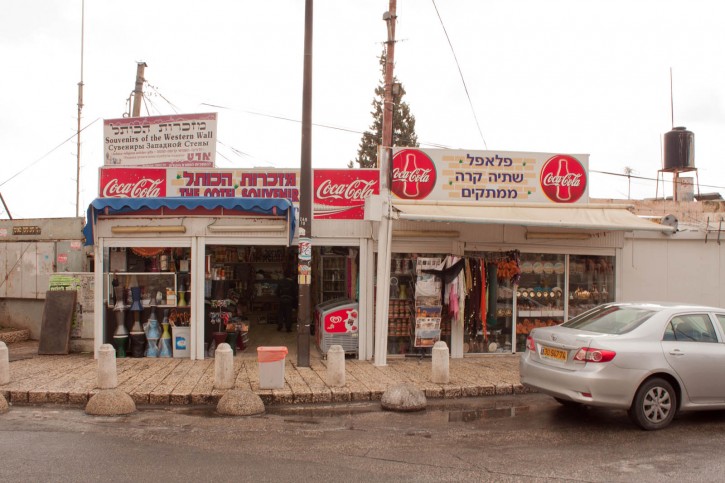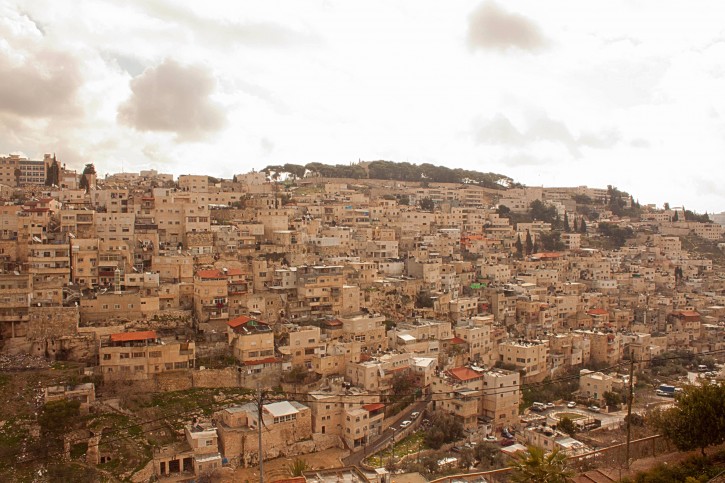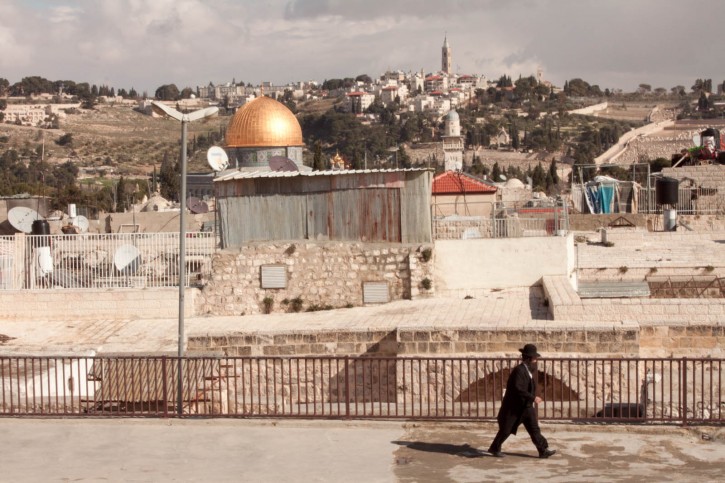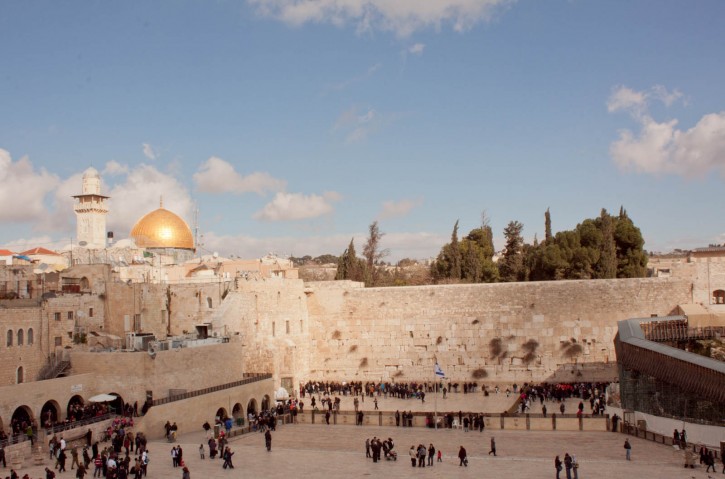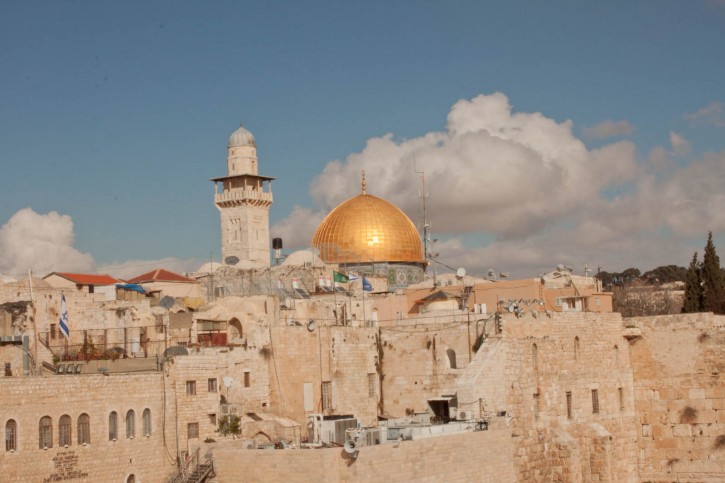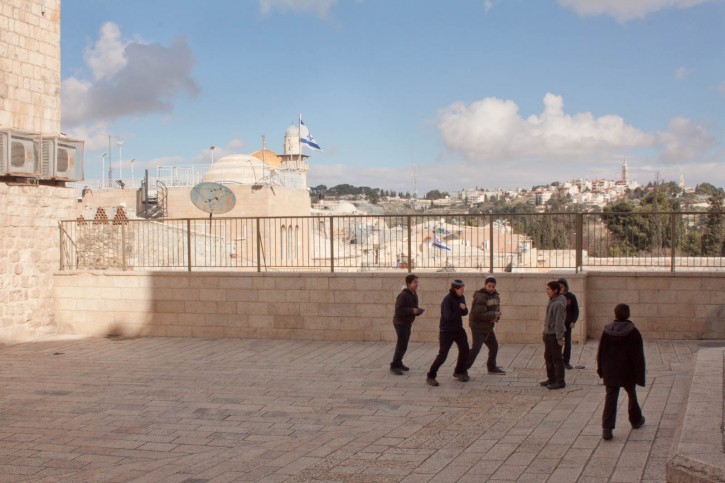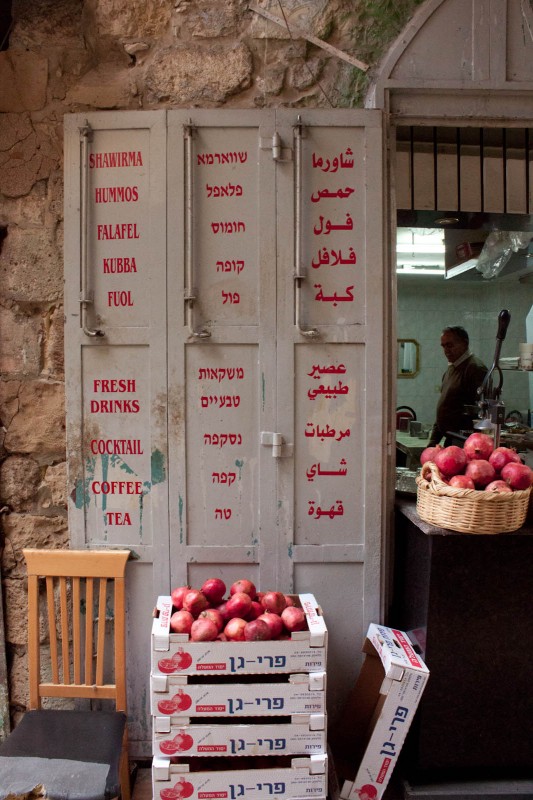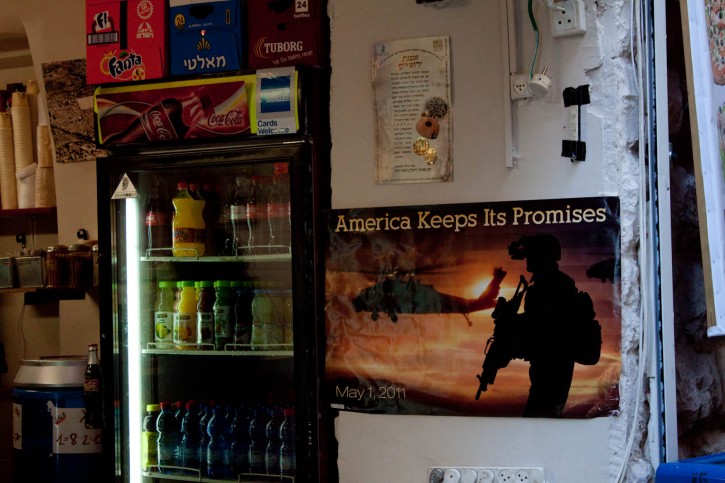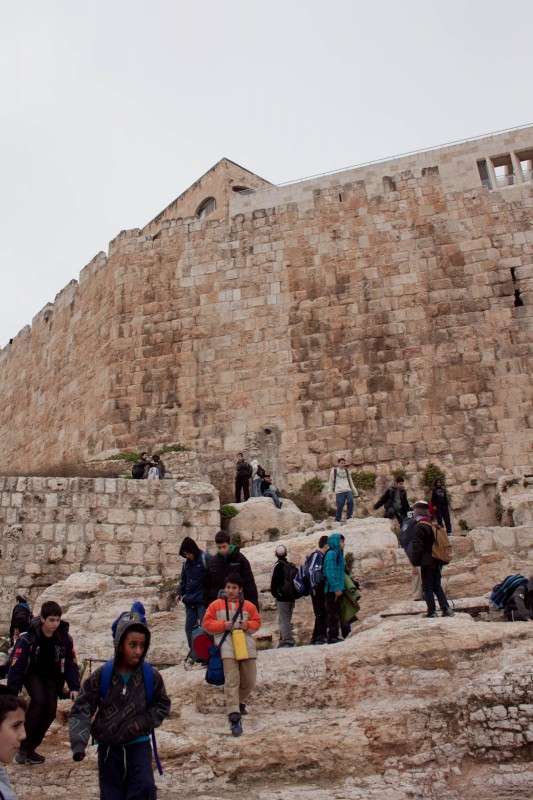“[Jerusalem] exists in the past, as the capital of a lost civilization. It exists in the future as the portal to the next world. It exists everywhere but in the present. It’s where the past and the future overwhelm the present.” Rich Cohen, Israel is Real
The Old City is encircled by thick walls, encompassing sites like the Dome of the Rock and the Temple Mount, places with names that are familiar even if you don’t know what they mean. Enclosed within these walls, this city seems to belong more to the dead than to the living. Things seem stagnant, yet people do live there. Schoolchildren descend ancient steps, the day done. Shops, catering mostly to the tourists and the pilgrims, offer pita and “Holy Bagels,” religious souvenirs, reproductions of famous works of art, and other tchotchkes.
Outside the walls are other sites just as old, like the City of David, a dig of the oldest settlement of Jerusalem. Across from the City of David is the mostly Palestinian neighborhood of Silwan, where living people breathe the same ancient air as their long-dead neighbors, where their muezzin calls them to prayer, though the adhan is largely ignored by tourists more interested in dust-covered tunnels with supposed biblical references.
Outside the walls, Jerusalem seems like any other city, with shops and museums and bridges and roads, and people unconcerned with God. But what is inside the walls seems to allow for what is outside them. What is Jerusalem, if not those supposedly holy places?
One night we went out to a bar called Uganda and drank Goldstars and talked about music. The name Uganda hints at the creation of the state of Israel, and therefore at its precarious position today, how easily it could have been on a different continent, with different angry neighbors. Even when you’re drinking, Israel doesn’t let you forget about its short history.
 We visited the Western Wall on Shabbat, a sea of men and women dressed unanimously in black. Women with long skirts or dresses and thick, practical shoes ushered their daughters to the women’s side, which is noticeably smaller and quieter than the men’s side. Their heads covered, they bowed to the old rocks, davening and mumbling their prayers, writing them on slips of paper and sticking them into the wall. I know they’re praying, but to me anything in Hebrew sounds like a prayer.
We visited the Western Wall on Shabbat, a sea of men and women dressed unanimously in black. Women with long skirts or dresses and thick, practical shoes ushered their daughters to the women’s side, which is noticeably smaller and quieter than the men’s side. Their heads covered, they bowed to the old rocks, davening and mumbling their prayers, writing them on slips of paper and sticking them into the wall. I know they’re praying, but to me anything in Hebrew sounds like a prayer.
I sat and considered the wall. Pigeons nest in it. There was a bar mitzvah happening on the men’s side, loud with drums and singing and dancing. Some girls took plastic chairs to stand on and peer over at the other side. Most women continued with their heads in their prayer books. When they were ready to leave, they walked backwards away from the wall, as if it were the sea, as if they were afraid of what it might do to them, not considering that it might be more dangerous to walk backwards in a crowd.
Eventually the crowd thinned and I approached the wall, amazed at all the slips of paper prayers. They seemed so disposable, and I had an urge to read them all. Where did these women think their prayers went? Maybe they believed that when they’re fulfilled they disappear. Maybe they knew that twice a year they’re collected and buried in the Jewish cemetery on the Mount of Olives. Maybe they didn’t care, because putting them out there, into the wall, into the world, is the first step towards accomplishing them. I sat there and I couldn’t abide the belief that the spirit of God was really more present there than anywhere else. In the gloaming, the stone blocks, millennia old, looked beautiful, but to me it’s just a very old wall.
At Yad Vashem a sweet-faced woman with round glasses told us her survivor story: About how she ran from her Polish town, the only place she knew, when the Nazis rounded everyone up. About surviving in a concentration camp under the care of a woman near her mother’s age, a woman who had probably lost her own children and, like a little girl with a doll, needed something to take care of. About the different families, in Sweden, in the States, who adopted her and gave her a new name, a new birthday. About growing up and growing older, not entirely knowing who she was. About how, one day, many years later, she and her husband visited Poland and found her birth certificate. Names and dates were fixed, memory revealed. She said it was surprisingly important to her, to hold her own birth certificate. It let her know she exists.
The last room in the museum is the hall of names, where volumes filled with the names of people killed in the Holocaust are stacked from floor to ceiling and a floating platform in the middle of the circular space allows a vantage of the sea of the lost. Adjacent to this space is a room with rows of computers, where you can look up your family name and see where your ancestors came from and where they died, that you didn’t come from nothing, that you have, in some sense, always existed. It seems to me that Jews are always trying to prove we exist.
Jerusalem, January 2012
(post title adapted from Mary Oliver’s “The Summer Day“)
